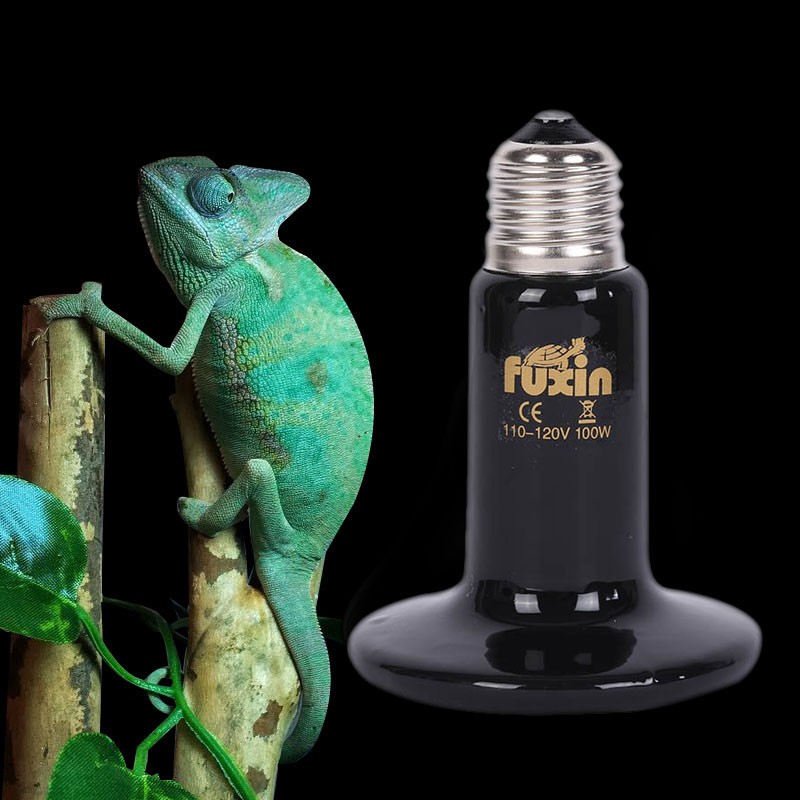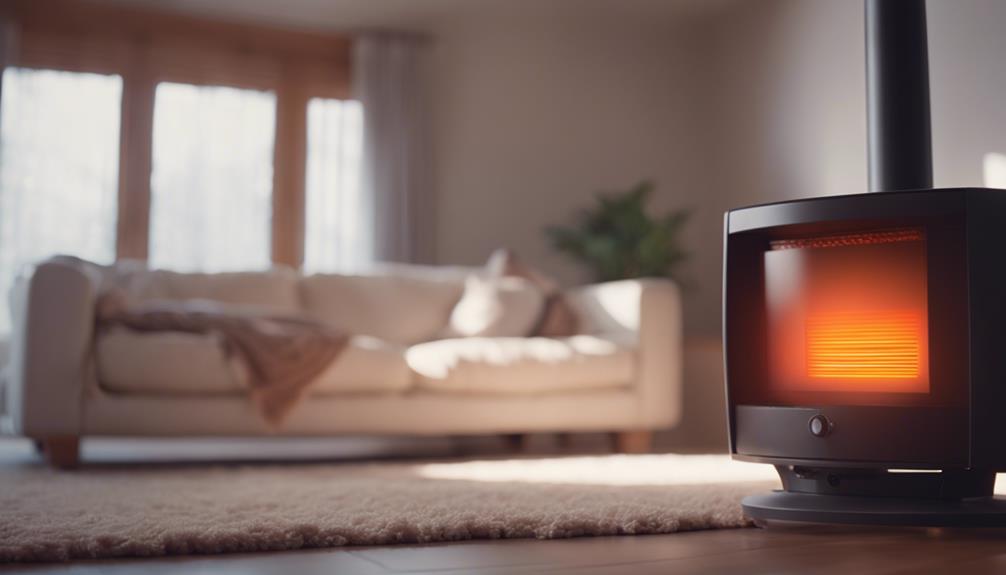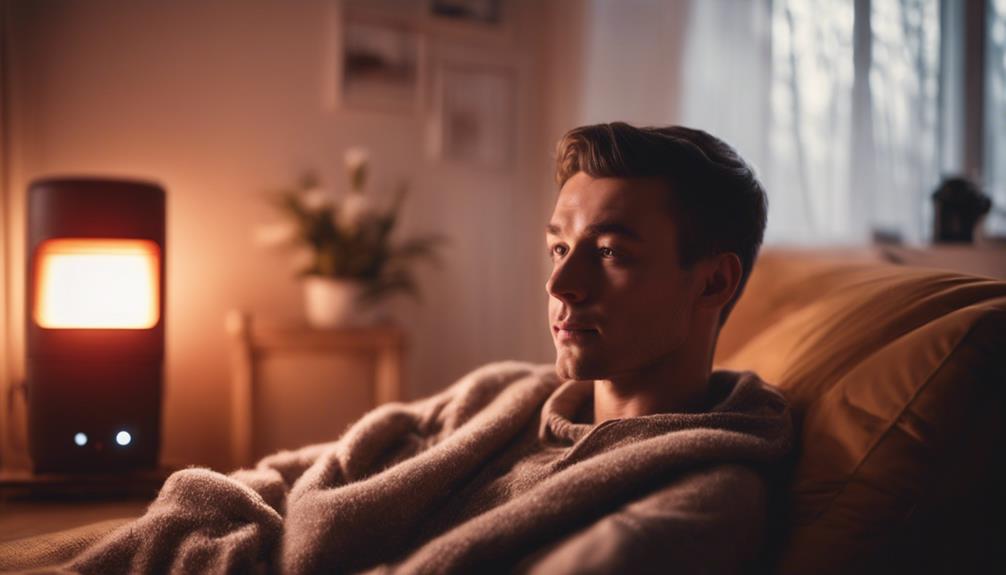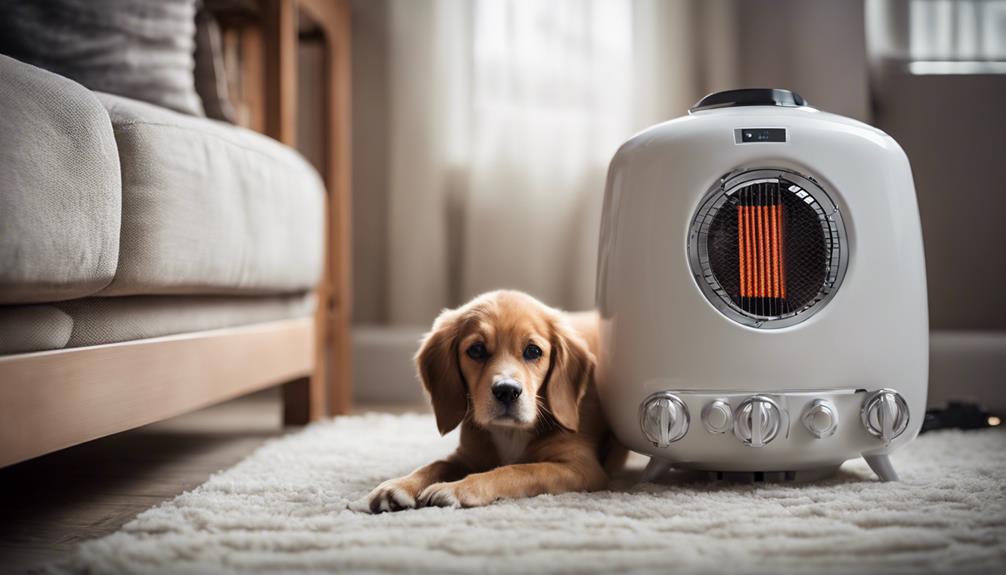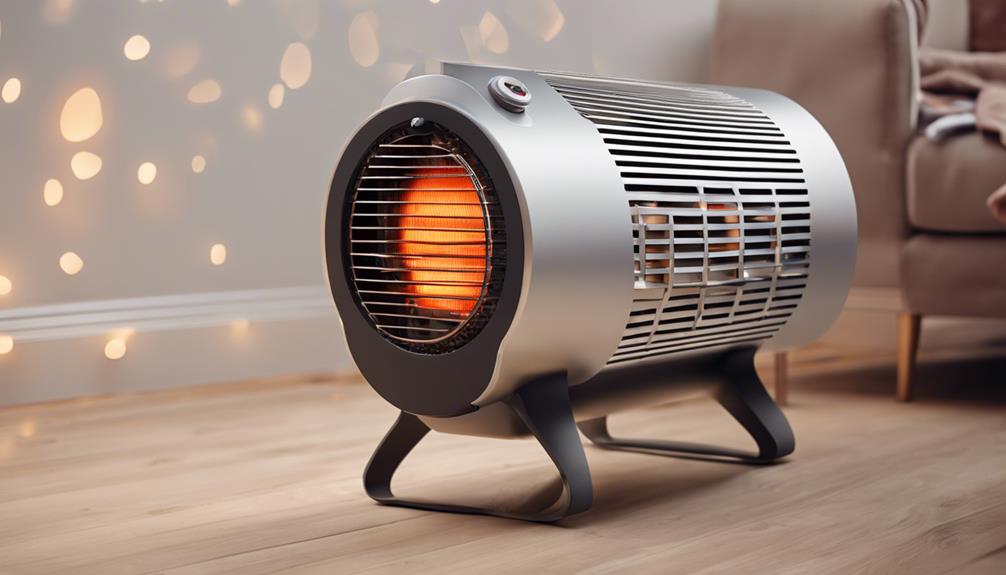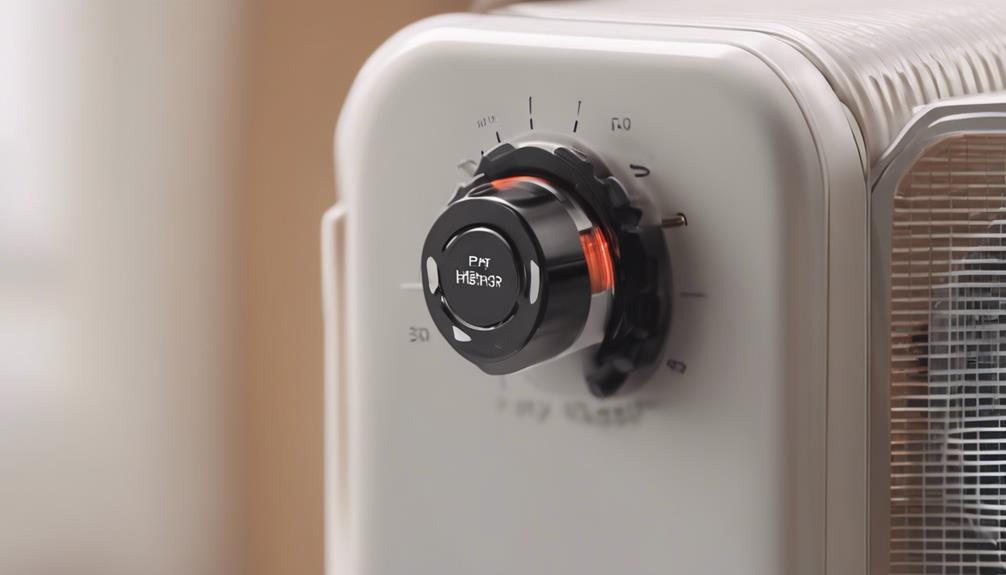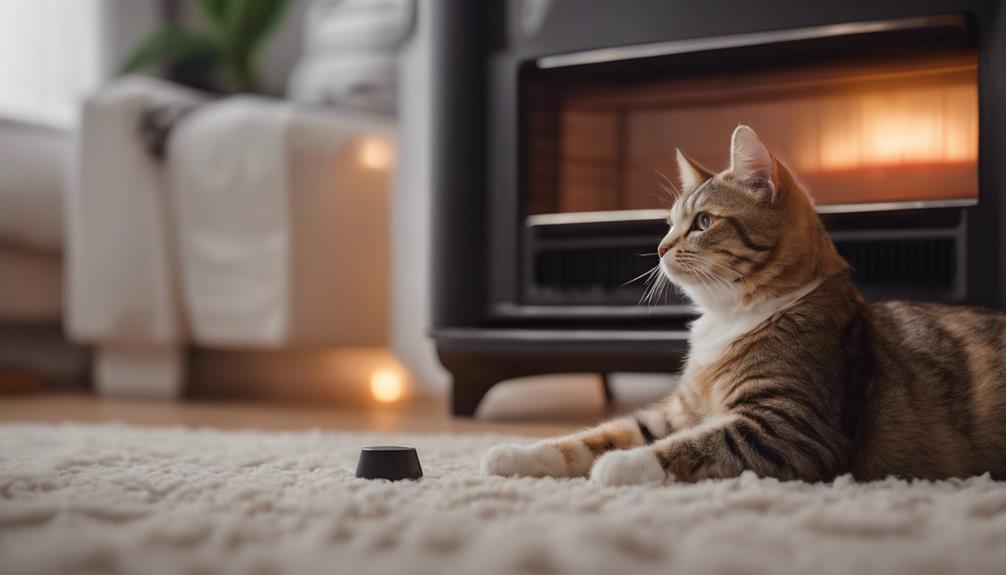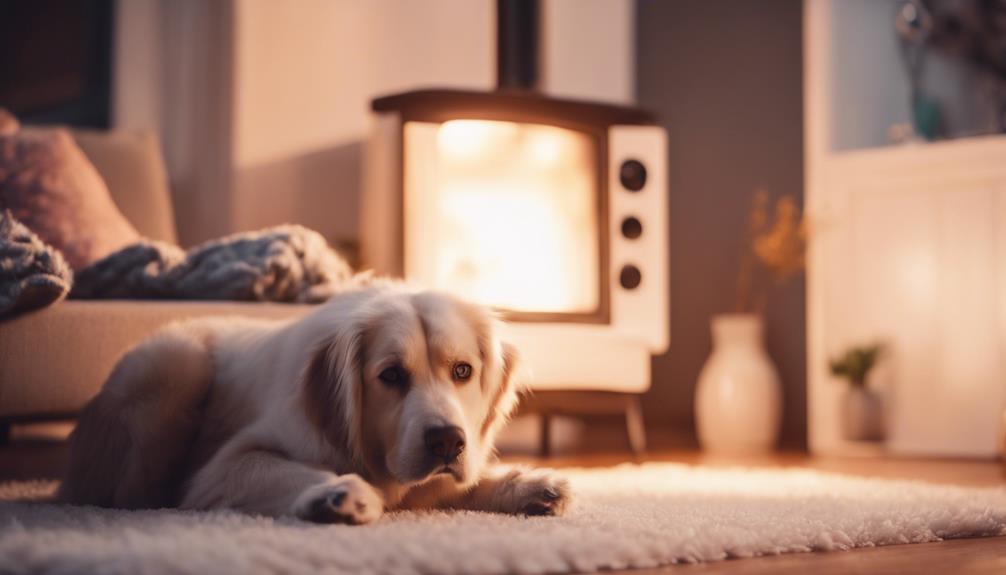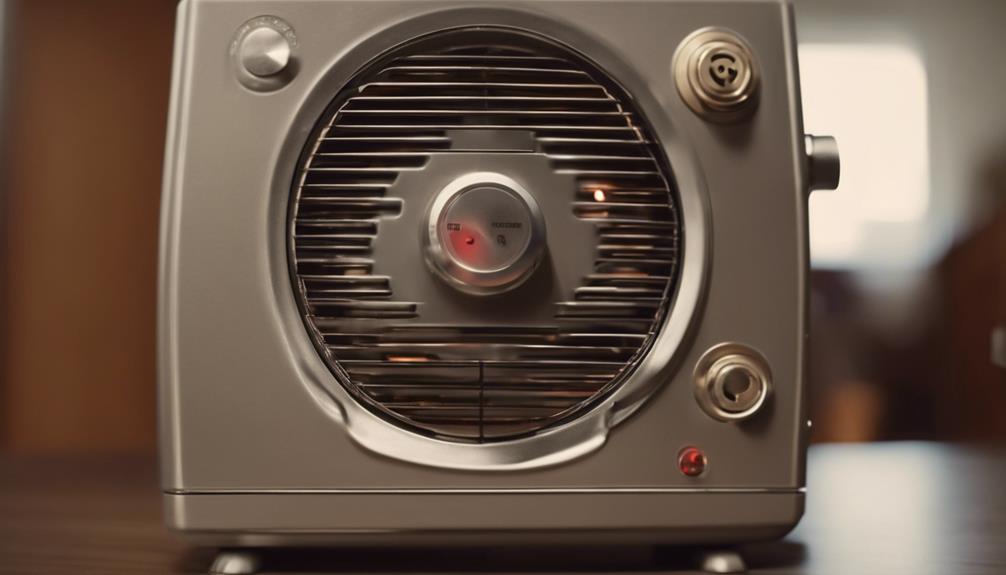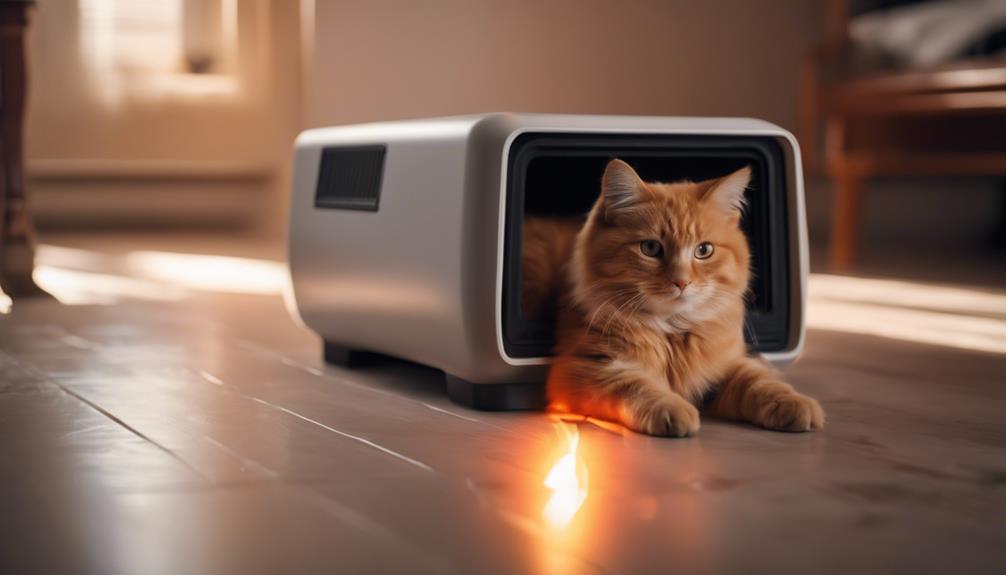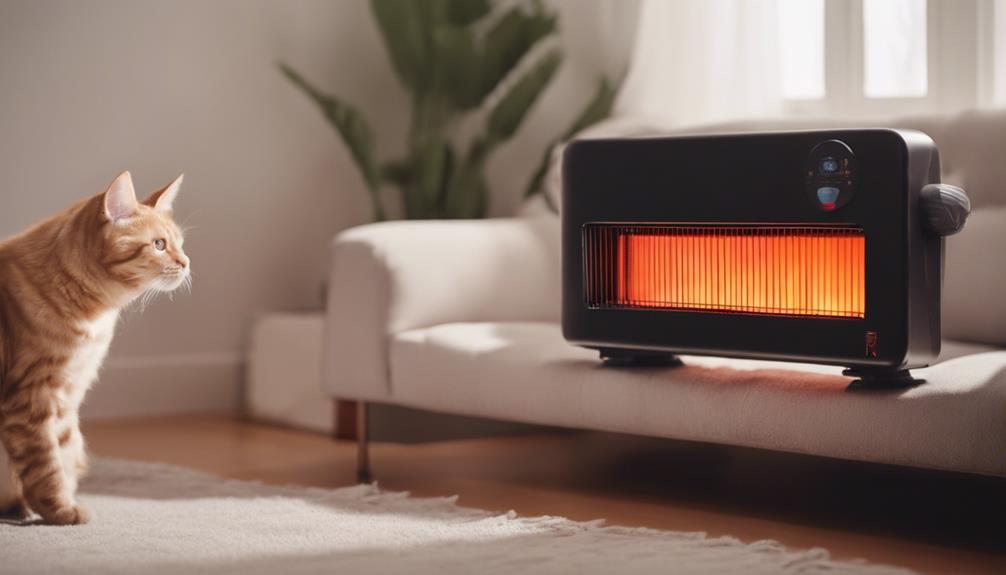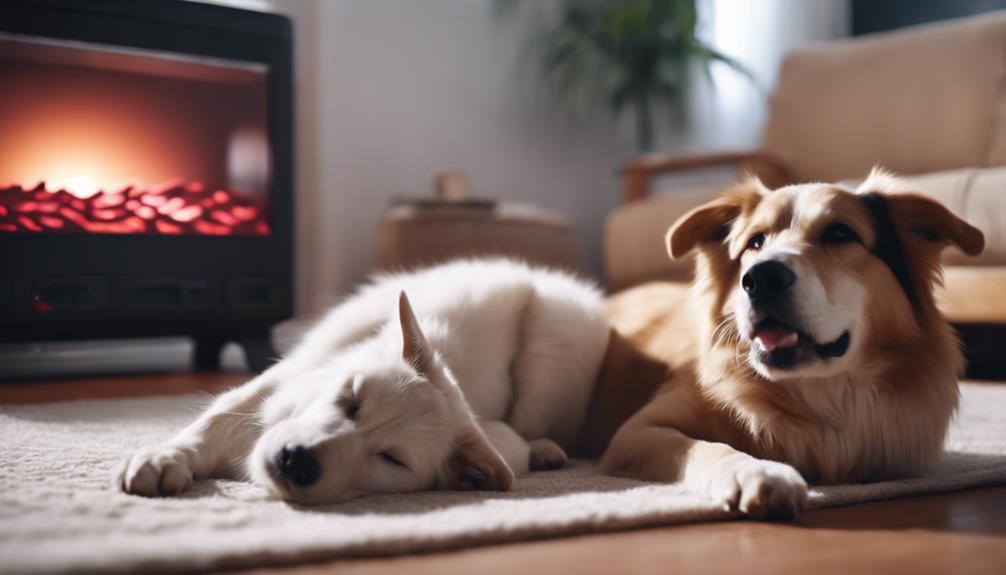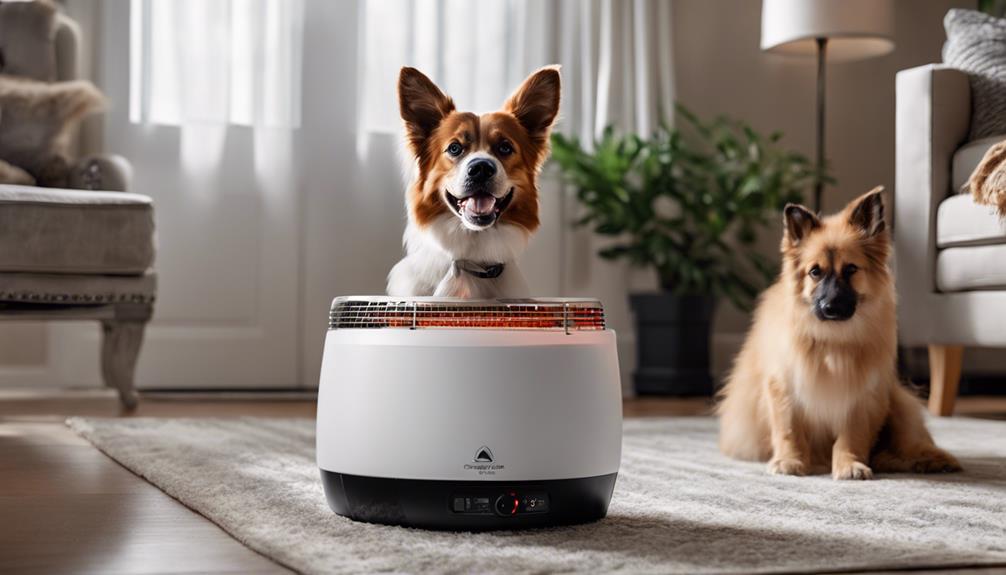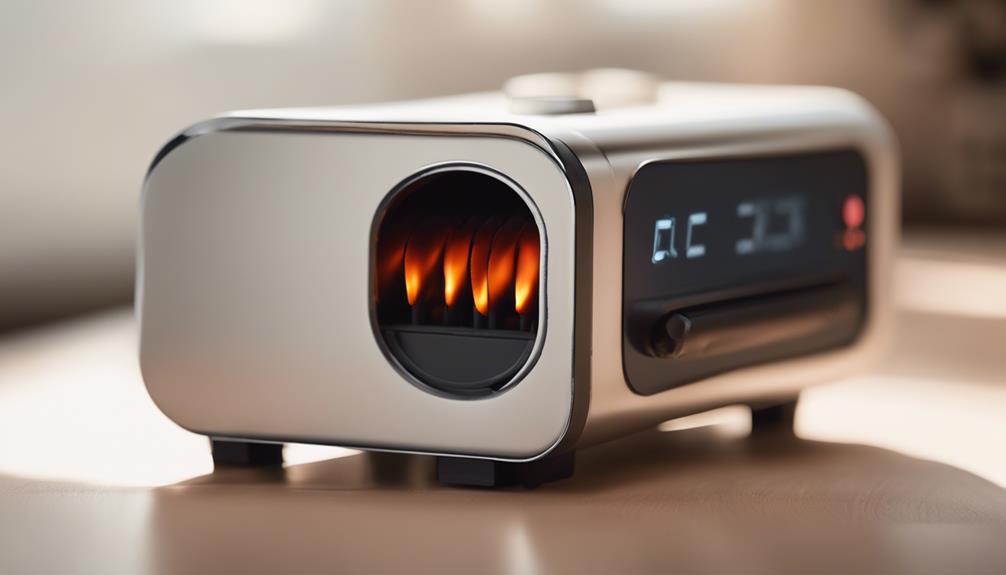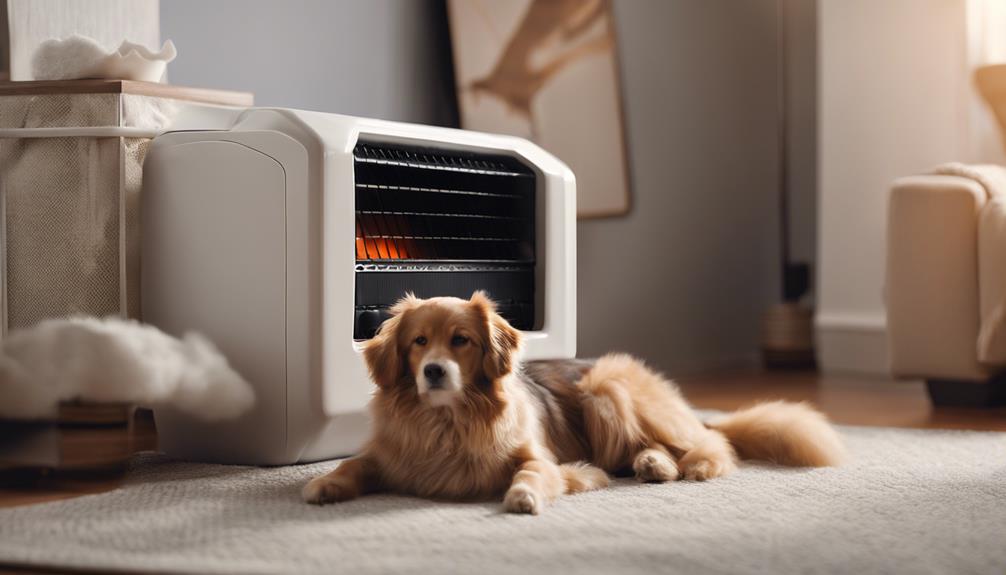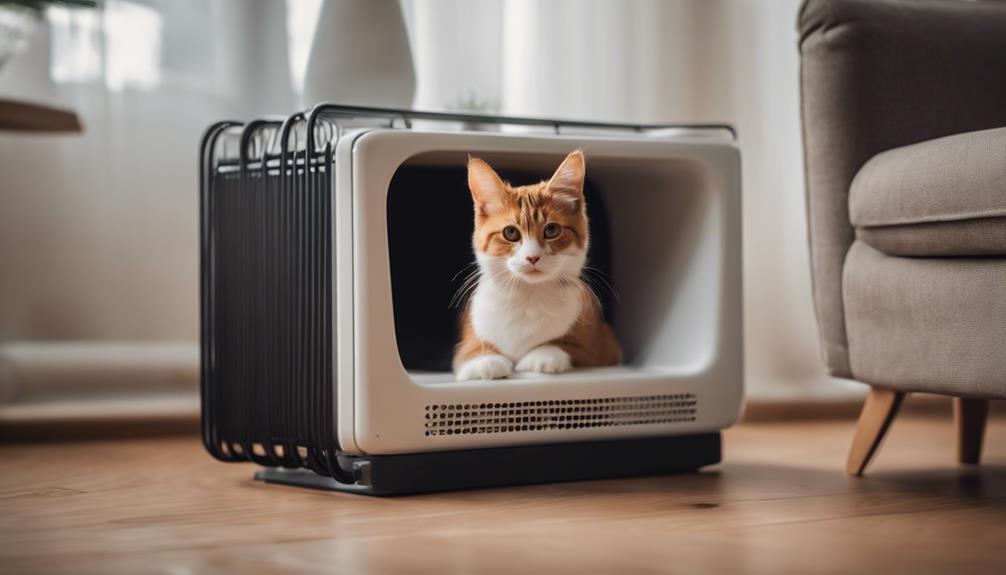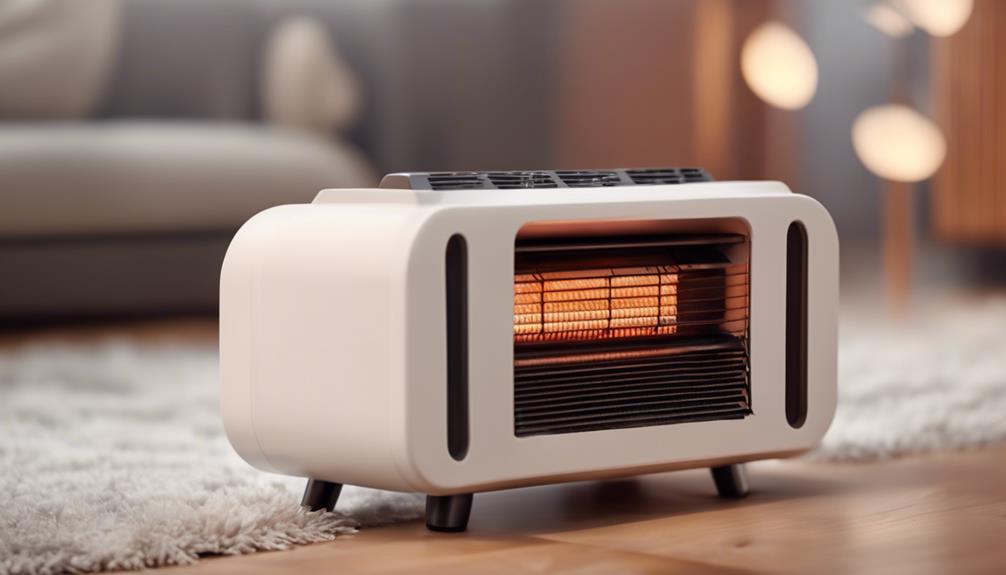
Make certain your child stays safe around heaters with key safety features. Tip-Over Protection prevents accidents by shutting off the unit if it tips. Opt for heaters with Cool-to-Touch Exteriors to prevent burns and increase energy efficiency. Overheat Protection regulates temps and cuts power if it's too hot, reducing fire risks. Utilize Child Lock Function to avoid any changes by kids. Safety Sensors monitor air quality for hazards and alarm abnormalities. Flame-resistant Materials and Cord Management Systems enhance safety and durability. Prioritize these features to guarantee a secure environment for your family.
Tip-Over Protection
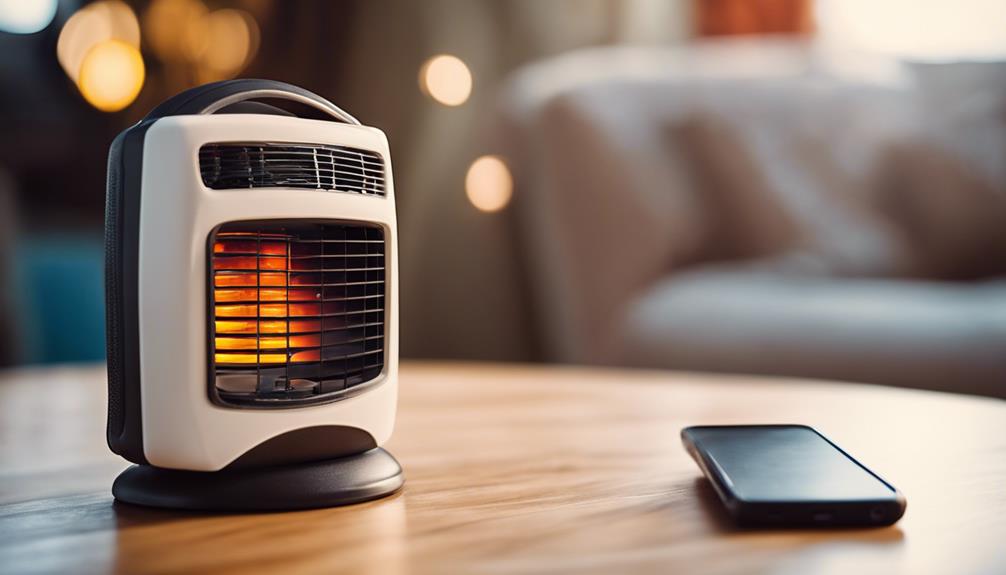
Ensuring your heater has tip-over protection is essential for preventing accidents in your home. Proper heater placement is vital; always put your heater on a level, flat surface to reduce the risk of it tipping over. Avoid placing it on furniture or uneven surfaces.
Supervision guidelines are also important. Never leave a running heater unattended, especially if there are children or pets around. It's advisable to keep a close eye on the heater when it's in use, ensuring that it remains stable and upright.
When choosing a heater with tip-over protection, look for models equipped with an automatic shut-off feature. This means that if the heater tips over, it will automatically turn off, reducing the risk of fire or burns.
Some heaters even come with a tip-over switch that cuts off power when the unit isn't upright. These added safety features provide peace of mind, especially in homes with active children or curious pets.
Cool-to-Touch Exterior
Make certain the exterior of your heater stays cool to the touch for added safety in your home. When selecting a heater, opt for models that feature a cool-to-touch exterior. This safety measure guarantees that even when the heater is operational, the outer surface remains safe to touch, reducing the risk of accidental burns, especially in homes with children or pets.
In addition to enhancing safety, a cool-to-touch exterior also contributes to energy efficiency. By preventing heat loss through the outer casing, the heater can operate more efficiently, providing warmth without wasting energy. This not only helps in reducing energy bills but also minimizes the environmental impact of using the heater.
Furthermore, manufacturers are increasingly incorporating cool-to-touch exteriors into their heater designs without compromising on aesthetics. Modern heaters come in sleek and stylish designs that not only enhance the overall look of your home but also prioritize safety and functionality.
When shopping for a heater, consider the cool-to-touch feature for a safer and more energy-efficient heating option that complements your design preferences.
Overheat Protection
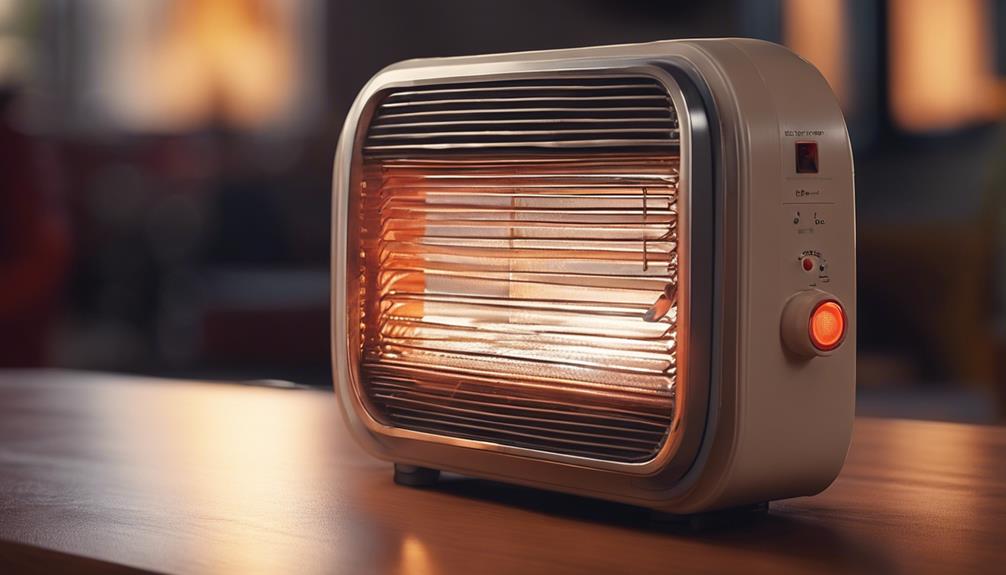
To further safeguard against potential hazards, consider heaters equipped with overheat protection to maintain a safe operating temperature.
Overheat protection is an essential safety feature in modern heaters. This feature guarantees that the heater doesn't exceed a certain temperature threshold by regulating its internal temperature. In the event that the heater starts to overheat due to blockages or malfunctions, the overheat protection mechanism kicks in to prevent any risks of fire or damage.
Heaters with overheat protection typically come with an automatic shutoff function. This means that if the internal temperature surpasses the safe limit, the heater will automatically shut off to prevent any further heating. This not only protects the heater itself from damage but also guarantees the safety of your home and family.
When choosing a heater for your space, prioritize models that offer overheat protection with automatic shutoff for peace of mind and a secure heating experience.
Child Lock Function
Consider selecting a heater model equipped with a child lock function to enhance safety measures in households with young children. This feature guarantees that curious little hands are unable to tamper with the heater's settings, minimizing the risk of accidents. The child lock function typically requires a specific combination of buttons to be pressed simultaneously or a code to be entered to release the controls, making it a valuable tool in preventing unintended adjustments.
To activate the child lock function, refer to the user instructions provided by the manufacturer. These instructions will guide you on how to set up and utilize this safety feature correctly. By familiarizing yourself with the process, you can confirm that the child lock is effectively engaged whenever necessary, providing an extra layer of protection for your children.
Incorporating a child lock function into your heater not only prioritizes child safety but also offers peace of mind for parents and caregivers. Always follow the user instructions meticulously to make the most of this essential feature.
Safety Sensors
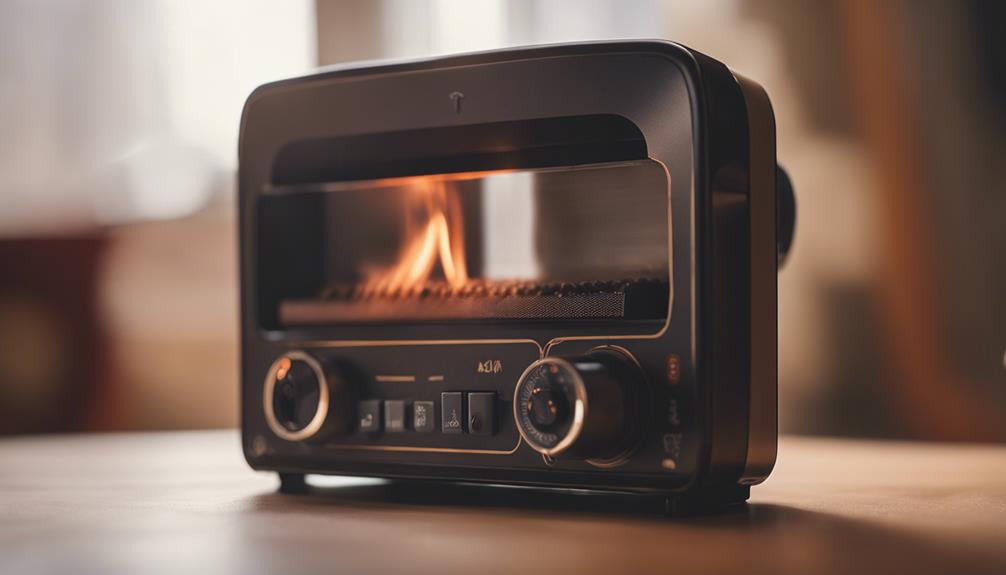
When looking for a heater model with enhanced safety features, the inclusion of safety sensors can provide an added layer of protection in monitoring and responding to potential hazards.
Safety sensors in heaters are designed to detect changes in temperature, air quality, and other factors that could indicate a safety risk. These sensors use advanced sensor technology to continuously monitor the environment and trigger safety protocols if any abnormalities are detected.
One key aspect of safety sensors is safety calibration, which guarantees that the sensors are accurately detecting potential dangers and responding appropriately.
Through safety calibration, the sensors can maintain their effectiveness and reliability over time, providing consistent protection for you and your family.
Flame-resistant Materials
Utilizing flame-resistant materials in heater construction enhances safety by reducing the risk of fire hazards in your home. These materials are often treated with flame retardants, which inhibit the spread of flames in case of a malfunction or accident. By incorporating flame-resistant materials into the design of heaters, manufacturers aim to provide an extra layer of protection for you and your family.
Apart from their fire-resistant properties, these materials also offer enhanced durability. This means that the heater components made from flame-resistant materials are less likely to degrade over time, ensuring a longer lifespan for your appliance. This not only contributes to the safety aspect but also adds value by increasing the longevity of the product.
When choosing a heater for your home, it's essential to prioritize models that feature flame-resistant materials. This proactive approach can greatly mitigate fire risks and provide peace of mind when using the appliance around children or pets.
Cord Management System
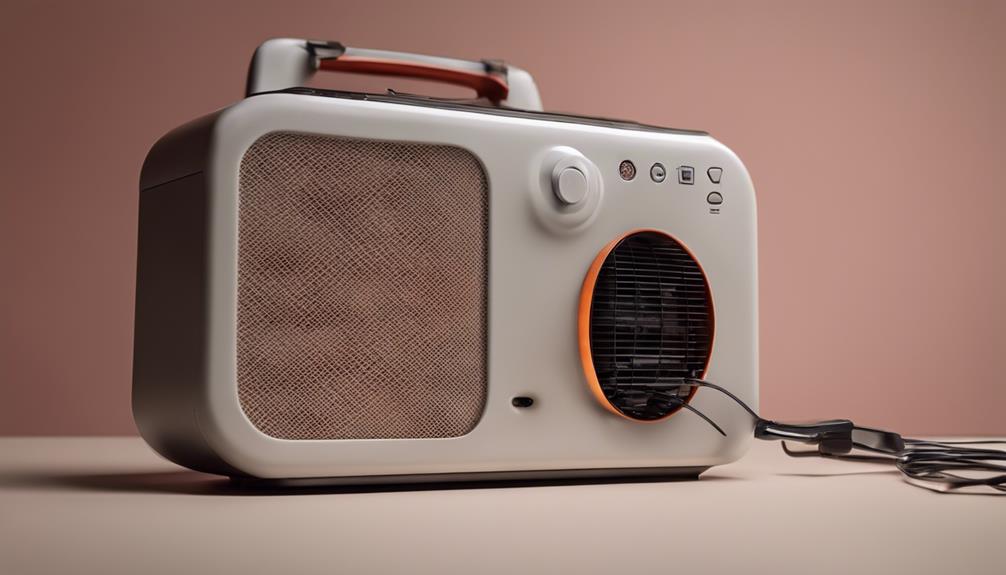
To enhance overall safety and organization, incorporating a cord management system into the design of heaters can effectively reduce tripping hazards and potential entanglements.
Cord organization is essential in maintaining a safe environment, especially in spaces where children may be present. By implementing a cable safety feature, manufacturers can guarantee that cords are neatly secured and out of the way, preventing accidental tugs or pulls that could lead to the heater toppling over or causing injury.
A well-thought-out cord management system not only enhances the aesthetics of the heater by keeping unsightly cords hidden but also plays a significant role in preventing accidents. With this feature, you can easily tuck away excess cord length, minimizing the risk of children tripping over loose wires.
Additionally, a properly organized cord system can prolong the lifespan of the heater by preventing damage that may occur due to tangled cords or accidental yanks. Prioritizing cord safety and organization in heater design is a proactive step towards creating a secure environment for your family.
Conclusion
Overall, when it comes to child safety features in heater technology, it's important to prioritize features like tip-over protection, cool-to-touch exteriors, overheat protection, and child lock functions.
These features help to guarantee a safe environment for children in the home, giving parents peace of mind knowing that their little ones are protected from potential hazards.
Additionally, safety sensors, flame-resistant materials, and a cord management system further enhance safety and stability, contributing to a more secure living space for families.
